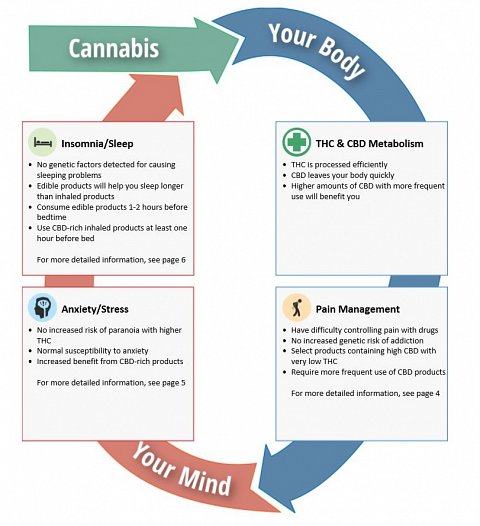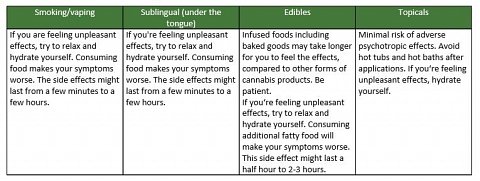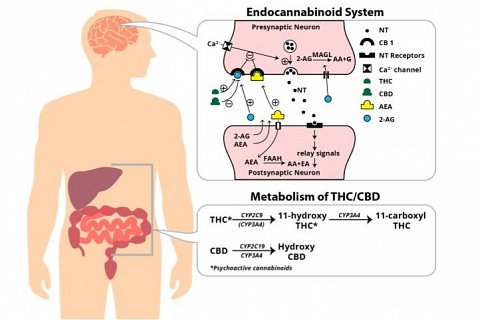-
CannaGX
review on June 6, 2018
by Rebecca Fishwick

At a Glance
Summary
The report provided by MelixGX was fairly comprehensive. At times I felt the information provided was a little generic and might be applicable to anyone. There were no details of the studies they had referenced for their findings, or which genetic variants they looked at to get their results.
That said, the report certainly filled a gap in the market created by the legalization of medical marijuana in parts of the United States, and provided information that would be reassuring to first-time users anxious about the possible side effects of cannabis.
Full Review
MelixGX is a genomic health company based in Palm Beach, Florida. The company’s original aim was to focus on fitness, and the various factors that can contribute to it, including what exercise and nutrition is most suitable for an individual’s body type.
Having done extensive research into health and fitness, the company decided to explore the benefits of cannabis in treating conditions such as chronic pain, anxiety, depression, addiction, insomnia, etc., and in aiding physical recovery.
Product Expectations
I found the MelixGX website straightforward, bright and informative. I saw immediately that they had two genetic health tests: MelixMJ and MelixFit. The MelixFit test focused on fitness and nutrition, while the MelixMJ test, which I planned to take, would analyze my DNA to see how I might respond to cannabis, and what this could mean for my health.
From the information on the homepage, I learned that differences in the genes that encode the enzymes responsible for metabolizing cannabinoids can affect how my body reacts to cannabis. These differences could drastically alter the effects of cannabinoids on the body.
The test would include: information about my reaction to cannabis, a guide to choosing cannabis products, information about self-administering, potential side effects, and potential interactions between cannabinoids and other drugs.
I saw that the DNA test would require a cheek swab, and that return postage would be paid for. After returning my sample, my comprehensive report would be sent to me in “a few weeks”.
To find out more, I went to the information page for MelixMJ. Here, I saw that the information about my reaction to cannabis would include optimal cannabinoid ratios, how I metabolize cannabinoids, and how I could use cannabinoids to manage various conditions.
The guide to choosing cannabis products would include optimal serving sizes and “titration” (i.e., concentration of cannabinoids), the differences between product types, and the benefits of different types of administering (oral, inhalation, etc.).
I would also be told the best ways for me to administer cannabis products. This included a breakdown of administering the different products (smoking, vaping, edibles, tinctures and topicals), the potential side effects, and administering techniques.
There would also be a section on how my genetic could influence side effects, how these side effects differ between product types and cannabinoid ratios, and information about dosing.
There would be information about potential interactions with pharmaceutical drugs, which could help me avoid dangerous drug interactions with adverse effects. This would also cover herbal supplements.
I read that cannabis could be used as an alternative to opioids or anti-inflammatory medications to manage or control pain, that it could be used to reduce anxiety and stress, and that it could help people with sleep disorders.
At the bottom of the page, I found an FAQs section. I read that regular cannabis users could use the test to determine which products are better suited for them. First time users could use it as a guide to finding the right products and dosages. I learned that my body could react very differently to various products and strains, and that variations in genome could mean that another person might react very differently to me.
On the “Our Process” page, it said that collecting a DNA sample with a cheek swab was “easier than brushing your teeth”. There were also instructions for taking the DNA test.
There was a list of what would be included in the kit: four cotton swabs, a small sample envelope, and a return shipping envelope (prepaid).
To extract my DNA, I read that MelixGX’s partner lab would use a combination of “Sanger sequencing, next-generation sequencing, and real-time PCR (polymerase chain reaction) to achieve the highest degree of accuracy”. The lab was CLIA certified and CAP accredited; their team had “decades of experience” in analyzing raw data, and would use extensive cross-referencing to form my genetic profile.
Concerning privacy, I learned that MelixGX would never share my information with anyone other than myself without my permission. Federal law would protect me against employer or health insurance discrimination based on genetic information, though my data wouldn’t be shared either way. The only circumstance under which they would share my information would be if the company was presented with a valid court order or subpoena by law enforcement.
Ordering Experience
The checkout process was fairly straightforward, and shipping within the United States was free. All purchases were made through PayPal, though an account wasn’t required, and I could pay with Visa, Mastercard, American Express, or Discover.
I wasn’t required to agree to the Terms of Service or Privacy Policy before checking out, and so I sought these out before confirming my order. The Terms of Service were to do with use of the website. In the Privacy Policy, I learned that when I browsed the MelixGX store, my IP address was automatically stored in order to provide them with information about my browser and operating system.
Other information – such as my credit card information, email, name, and address – would be used only for the purpose I had provided it for (e.g., completing a purchase, delivering an order, or refunding a purchase). My information would not be used for marketing purposes without my consent, which could be withdrawn.
I learned that MelixGx’s online store was hosted by Shopify Inc., which would store my information on a secure server behind a firewall. Any credit card information would be encrypted, and they adhered to PCI-DSS security standards.
Since MelixGX used third parties for some of their services, they suggested that I read their privacy policies for more information, as once I left the MelixGX site I would no longer be governed by their privacy policy or terms of service.
They provided a list of cookies they used, and I could choose whether or not to opt out of receiving them.
After placing my order, I received an email confirmation. My kit arrived about three weeks later, and resembled the one pictured on the site.
The kit included instructions for taking a sample, which were simply laid out. I had to use four cheek swabs, which I left to dry for 10 minutes each. There was a registration code included, which I used to register my kit online. Once I’d taken my samples, I sealed the swabs in the packet provided, which I wrote my name and date of birth on, and then sealed this in the pre-labelled, prepaid envelope.
After returning my kit, I received my results in about three and a half weeks.
The Results
My report came in an email containing a PDF file. The report was 22 pages long, and included a contents page, introduction, and summary of my results.
There was a visual summary of how my body reacts to cannabis (shown below), and a summary of my personal product selection, both of which were gone into in more detail.

A visual summary of how my body reacts to cannabis.
Results Section: Personalized Guidance for Pain Management
For pain management, it was recommended I use a product with high CBD content and less than 5% THC.
I did a quick web search of each of these terms, and found that “CBD” stood for cannabidiol, an ingredient in cannabis that doesn’t have intoxicating effects. While there is good evidence that CBD can help to treat epilepsy, its other beneficial effects (of which many are touted) are not yet well-tested enough to be certain.
“THC” turned out to stand for tetrahydrocannabinol, which is the principal psychoactive ingredient in cannabis. In high dosages – or in people with a higher sensitivity – THC can cause paranoia. CBD helps to inhibit the effects of THC.
Apparently, my gene combination for pain was found in only one in 274 people. I discovered that I was genetically predisposed to insufficient pain control from opiates, and had no increased risk of substance dependence. This meant that opiates would provide less pain relief for me, and I might experience more side effects. I was told that “using cannabis may reduce the amount of these medications needed”, though it was not said explicitly that cannabis would be of any particular benefit to me personally.
They recommended to use products high in CBD, and said that I may require more frequent use due to high CBD metabolism. I read that products containing CBG (cannabigerol) also provide benefits in controlling pain. It was recommended I consult with my healthcare provider before discontinuing any medications.
There was a table showing the cannabis strains they recommended, containing CBD and THC percentages. The table also included the sort of terpenes (fragrances) these products have.
There were suggestions of fragrances to look for: myrcene (mango), limonene (citrus) and β-caryophyllene (black pepper).

Suggestions of terpenes/fragrances I should look for.
Myrcene was said to be relaxing, while limonene reduced inflammation and provided stress relief, and β-caryophyllene provided pain relief, reduced inflammation, and helped with addiction.
I wasn’t sure what they were basing this information on, since aromatherapy does not have much in the way of scientific backing. Yet I was given suggestions for fragrances for managing anxiety and sleep too.
Results Section: Personalized Guidance for Managing Anxiety/Stress
For managing stress or anxiety, it was recommended I take at least an equal amount of CBD as THC. I found that my gene combination was found in one in 98 people. Apparently, I had a “normal risk” of anxiety and paranoia compared to the general population, with fast CBD metabolism.
To start with, it was recommended I avoid products containing more than 18% THC and little or no CBD. Products with higher levels of THC could produce “an uncomfortable, excessive cerebral high”, which could result in paranoia. I should use products with a 1:1 ratio of CBD and THC, or more CBD than THC. If I chose a flower with more than 18% THC, I should consider combining it with a CBD only flower to limit the effects of THC.
I read that THC combined with CBD has been linked to a reduction in social anxiety. Still, they suggested I start with a lower dosage of THC and adjust slowly. Apparently, cannabis had been shown to help people with my genetics reduce anxiety-related symptoms “stemming from past traumatic or emotional events”.
There was a table showing the strains they recommended for me, their levels of THC, CBD, and other cannabinoids (where this information was available), and the aroma of each (shown below).

A table showing the strains recommended to me for reducing stress and anxiety.
Results Section: Personalized Guidance for Managing Sleep/Insomnia
Their analysis of my DNA revealed no genetic influences on sleeping problems. Still, for managing sleep or insomnia, it was recommended I use products with high CBD, with a 1:1 ratio of CBD to THC, or more CBD than THC.
Though I don’t have a high genetic risk for paranoia from THC, I was told I may still experience paranoia from too much of it. I should therefore balance CBD:THC ratios, or have more CBD than THC. They suggested I use different products for daytime and nighttime use (which raised the question of just how excessive a habit they thought I planned to develop…), each with different terpene profiles. During the day, I should use “energizing” terpenes, and ones with sedative effects at night.
I also read that CBN (which turned out to stand for “cannabinol”, a non-psychoactive cannabinoid found in only trace amounts in cannabis) was “known to have sedative effects”, though how they knew this I wasn’t sure.
I was told that edible products would help me sleep longer compared to inhaled products. I should consume edible products one to two hours before bedtime in order to stabilize sleep, while inhaled products with both THC and CBD could be used at any time before bed. It was recommended I use CBD-rich products an hour or more before going to bed, as they may lengthen the time it takes to fall asleep. There was also some general advice about how to get good sleep, like taking exercise and skipping naps.
Results Section: Product Selection and Self-Administration Guidance
In the product selection guide, I found information about flowers, concentrates, and edibles. I learned that there were essentially two types of flower: sativa-dominant, and indica-dominant. Sativa-dominant flowers were meant to be more uplifting and energizing, whereas indica-dominant flowers were meant to be more relaxing and sedating.
I read that the majority of flowers available in the US are hybrid strains, and so have characteristics of each. And ultimately, the different effects gained from different flowers is down to the combined effects of terpenes, phytocannabinoids, and cannabinoids. I was given similar recommendations to before: to seek out products with at least a 1:1 ratio of CBD to THC, and to seek a flower with very low THC content (less than 5%) for treating pain.
I found that cannabis concentrates included cartridges for vaping, ingestible tinctures, lozenges, and topical products (which can be rubbed on the skin). For vape products, it was recommended I start with a CBD to THC ratio of at least 1:1, or if using a THC product with low CBD, to wait 20 minutes after the first inhalation to check for any adverse effects.
When taking tinctures or liposome products with high THC and low CBD, it was recommended to use multiple applications (presumably in smaller amounts). For products with high THC taken sublingually (i.e., a lozenge under the tongue), they recommended I start with a smaller amount (such as half the suggested dose) to avoid adverse psychotropic effects.
There was a page containing self-administration guidance, which provided pretty much the same information, only broken down more simply and clearly. I learned that “when used appropriately”, topicals were non-psychoactive, and could be used for localized pain relief, muscle soreness, tension, and inflammation. I should apply generously, and repeat applications two or three times if needed. I should be careful about psychotropic effects if using a THC only patch.
Results Section: Managing Potential Side Effects
I’d already found I was less likely to experience paranoia from high THC. But they warned that if I was currently under stress, then THC could exacerbate this. I may also experience increased heart rate and dry mouth, and so I should take care to hydrate before using cannabis products. If I suffered from dry eyes and mouth from using cannabis products, I should avoid the terpene delta 3-carene.
There was a note saying that if I should need medical attention I should seek assistance and not drive. A table covering what to do if I experienced adverse effects from different cannabis products (shown below).

Information about handling potential side effects.
Generally, their tips were to relax and to stay hydrated, and avoid consuming food (particularly fatty foods), as this might make side effects worse. After taking topicals, I should avoid hot tubs and hot baths. I read that hydration would decrease the concentration of THC and speed up its elimination from my system. Hydration could help with headaches, which could be avoided by using only clean, organic cannabis products.
Another table gave initial doses and precautions, and gave a timeline of when the peak effects were likely to be. There was a note that if I grew cannabis products myself, I may want to have a sample tested by a lab to check its potency and terpene profile.
Results Section: Potential Interactions with Medications
There was a section showing the potential interactions between cannabis and various medications. This also included herbal supplements, which I found surprising as I didn’t think these could be potent enough to have much effect. There were details about interactions with kava, St. John’s wort, ginseng, and herbal sleep aids.
There was also a list of potential interactions between cannabis and various pharmaceutical drugs. This included anxiety medications, pain relievers (including opioids, anti-inflammatories, and others), and various sleep aids.
Results Section: A Memo for Your Product Consultant
There was a page containing information for a “product consultant”, with a summary of the genetic predispositions of the “individual” (me), and which products and strains they might benefit from. I supposed that “product consultant” could cover a variety of people: whether it be a doctor, a pharmacist, or a person you meet on a park bench.
Results Section: Education and Definitions
There was some information about the “endocannabinoid system” and how the body metabolizes cannabis. It was theorized that cannabinoids could correct (temporarily, at least) a serotonin imbalance in the brains of patients with anxiety and depression.
There was a diagram showing the endocannabinoid system, and metabolism of THC and CBD (shown below).

A diagram showing the endocannabinoid system and cannabinoid metabolism.
The report ended with a glossary of various terms, information about different terpenes, and tables showing high, low, and middling ratios of CBD and THC, and finally a disclaimer.
Summary
The report provided by MelixGX was fairly comprehensive. At times I felt the information provided was a little generic and might be applicable to anyone. There were no details of the studies they had referenced for their findings, or which genetic variants they looked at to get their results.
That said, the report certainly filled a gap in the market created by the legalization of medical marijuana in parts of the United States, and provided information that would be reassuring to first-time users anxious about the possible side effects of cannabis.


